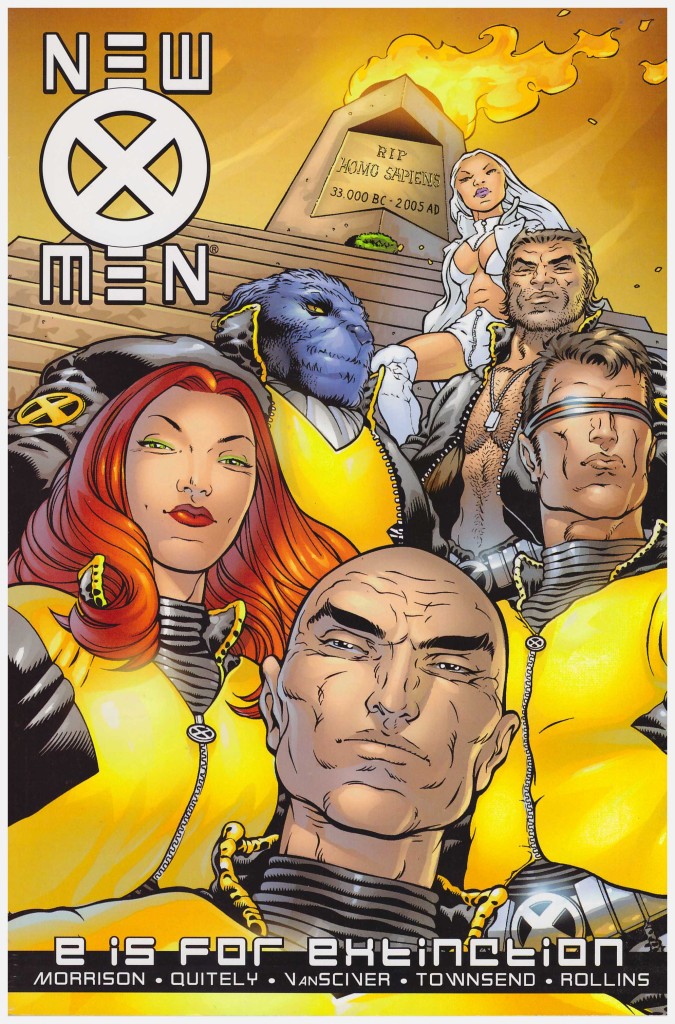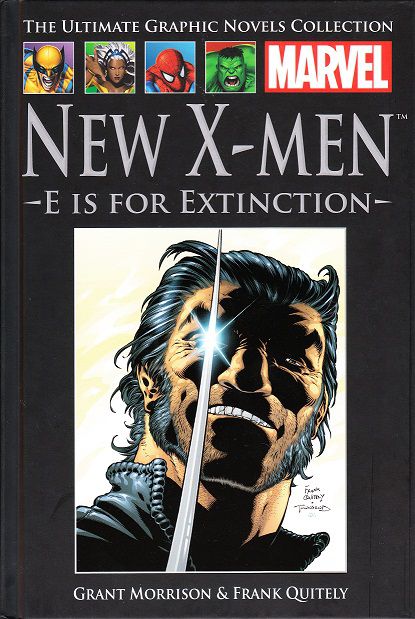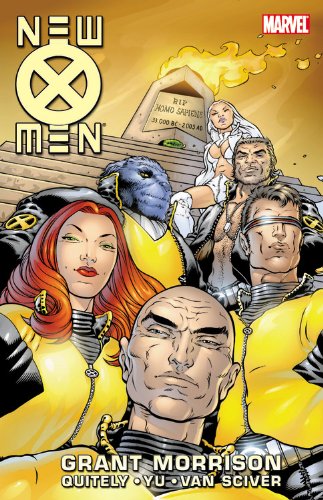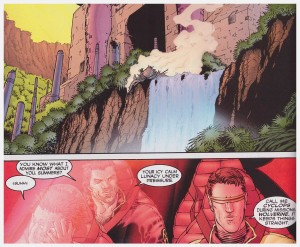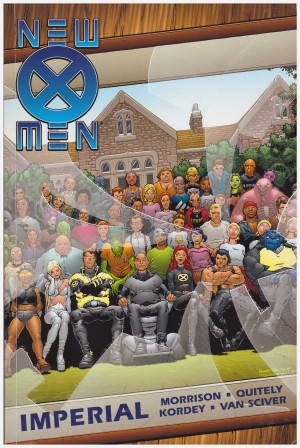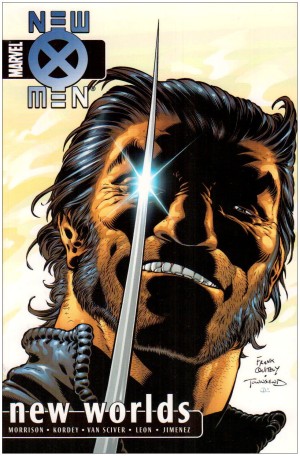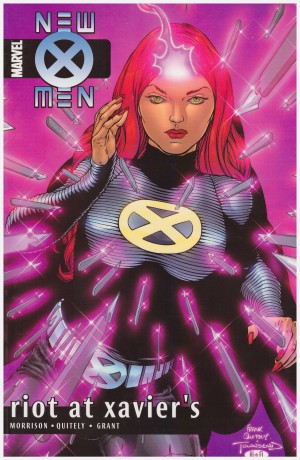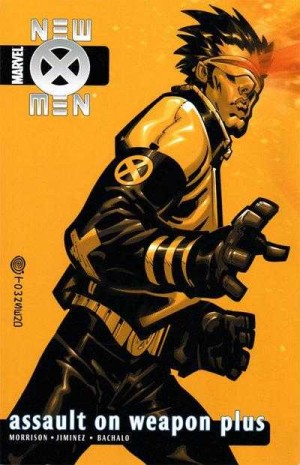Review by Karl Verhoven
Grant Morrison’s run on X-Men was a game changer for a franchise that may have been increasingly commercially successful, but had become creatively complacent. Morrison grasped at the possibilities of groundbreaking scientific developments, returned credibility to the X-Men’s school environment and introduced several top rank new characters. His intent and scope is apparent in this slim collection in which, purely as a bonus, he also re-designed the series logo as a clever reversible stamp and the character costumes to boot.
What’s labelled the ‘Morrison Manifesto’ is included. It’s his series pitch, and far more enlightening than most bonus material in setting out a vision. “Here’s what I think would be the most effective strategy for keeping old readers, and, more importantly, for attracting a new contemporary audience”, he begins, and lives up to his promise.
Those concerned by Morrison’s reputation as a master of obfuscation need have no fear. For the majority of the run his X-Men material is linear and welcoming, but not at the cost of dumbing down. E is for Extinction is an intelligent and exciting exploration of how perennial foes the Sentinels might be modified (answer: nano-Sentinels), the parallel evolution of mutants and humanity, and the application of DNA technology. He additionally sorts out the overwhelming proliferation of mutants in one fell swoop and introduces a credible villain connected to Professor X that even his mighty mental powers can’t overwhelm. Yes, just who is that mysterious female analogue to the Professor anyway? “Behind the mask of liberal respectability we all hate the mutations, don’t we?” she trills as she completes copying the DNA structure of one Donald Trask.
Morrison is helped immensely by the art of Frank Quitely for three chapters of four. Quitely is never afraid of distance or reduction in his layouts, and possesses a strong sense of design. Sadly, quality of his kind takes time, and he was never going to be a match with a monthly series. It’s a not yet fully into his prime Ethan Van Sciver who illustrates the final chapter, in which the school is re-established, and Emma Frost introduced to it.
Throughout his run Morrison restricts himself to a limited core of X-Men, augmented by new characters he introduces. Beast, Cyclops, Emma Frost, Jean Grey, Professor X and Wolverine are the primary cast. It’s their personalities that count rather than their mutant gifts, and each has a purpose in the larger picture Morrison begins here and continues in Imperial.
Beware buying this second hand. Earlier printings omit the X-Men Annual in which Morrison introduced Xorn, a character with a fundamental part to play in the volumes that followed. It’s created in landscape format, and illustrated by Leinil Francis Yu, but is among the lesser end of Morrison’s X-Men.
E for Extinction is fantastic stuff, yet there are always those who will not see and astoundingly, when originally issued, there were critics who hated Morrison’s approach (something he anticipated in the Manifesto). History has proved them wrong as his run ranks among the key X-Men material. It’s available in its entirety in one oversize Omnibus edition, while this volume can be found as the traditional paperback and as a digest, and further as part of New X-Men by Grant Morrison Ultimate Collection volume one, which also incorporates the following collection, Imperial. In the UK it’s also available as part of Hachette’s Ultimate Graphic Novels Collection.
